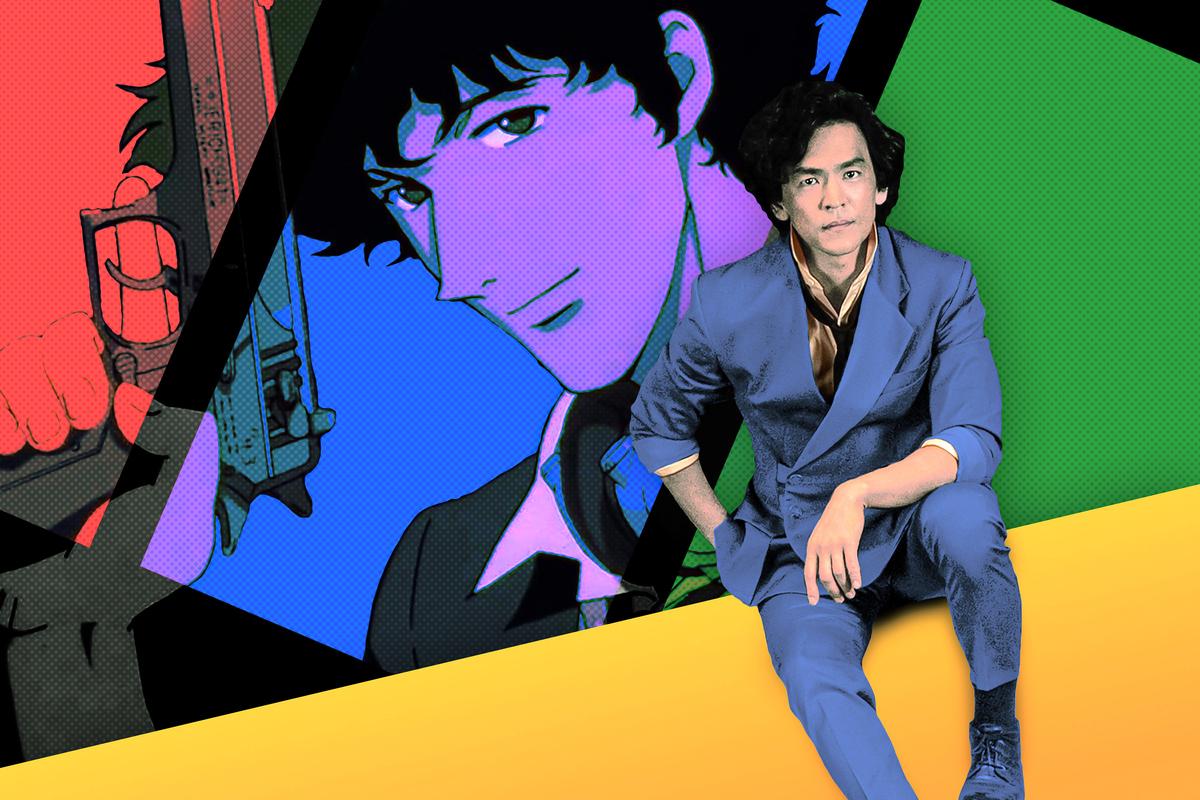
For once, I’m inclined to praise and defend—with caveats—a Western live-action adaptation of a classic anime series.
On Friday, Netflix premiered its long-anticipated adaptation of the 1998 anime series Cowboy Bebop. Bounty hunters Spike Spiegel (John Cho), Jet Black (Mustafa Shakir), and Faye Valentine (Daniella Pineda) live together on board the space freighter Bebop, chasing paydays across the galaxy. They’re an argumentative crew, often hustling at cross-purposes, each sulking off now and again to solve their own sad backstory. Spike is a former mobster, Jet is a retired cop, and Faye is a wanted debtor with amnesia after spending half a century in cryosleep. Presumed dead by the mob known as the Syndicate, Spike longs for his former lover Julia (Elena Satine), who is held captive by her abusive boyfriend, Vicious (Alex Hassell), as he leads a bloody coup within the Syndicate. Once partners in crime, Spike and Vicious now rival each other for Julia’s affection.
The original Cowboy Bebop dedicated just a few episodes (of 26 total) to developing its core story line about Spike, Julia, and Vicious; the series otherwise followed the Bebop crew in adventurous vignettes. Spike, for example, fights a deranged clown in an abandoned theme park (“Pierrot Le Fou”). Spike, Jet, and Faye eat magic mushrooms and wander for hours around the Bebop, high out of their minds (“Mushroom Samba”). The live-action Cowboy Bebop is a lot more linear and the love triangle is much more important. Vicious, a terse and elusive presence in the original series, is now a hammy villain with far more dialogue in any given episode than he speaks in all 26 episodes of the anime combined. In fact, the least favorable contrast with the original series hinges not on Spike, as fans might have feared, but rather on Vicious: On balance, his heightened prominence strikes me as a grave miscalculation, too often overpowering the looser, groovier elements truer to the original series.
Sometimes the live-action scenes track the original series beat for beat; sometimes, for the better, the adaptation takes great liberties with the chronology and characterizations. Cho, Shakir, and Pineda each excel in their respective roles, and they’ve got great, contentious chemistry together. Cho, as the lead, balances the humor and melancholy in Spike rather capably. But then there’s his choreography: In the original series, Spike moves through the world with a certain invulnerability. He’s hard to hit and quick to contort his lanky profile out of harm’s way. By contrast, the fights in the live-action adaptation, especially in the first couple of episodes, are rather slow and stilted. Cho’s Spike is strong but not especially graceful or clever in combat. The early fights are badly staged, but later fights with higher stakes are much better. The penultimate episode culminates in a one-man army massacre, captured in a long tracking shot, at last making good on Spike’s badass reputation and Cho’s painful training for the role. It takes the series a while to hit its marks on other counts, too. The live-action Cowboy Bebop gets good—dare I say, great—once Spike, Jet, and Faye have warmed up, Vicious has toned down, the choreography has smoothed out, and the story has branched from the familiar setup into its own alternative direction.
It was never going to be easy for live actors to reimagine Cowboy Bebop. Typically live-action anime adaptations struggle to reconcile the cartoonish elements—the character styles, the exaggerated movement, the stark colors—with the practical constraints on real actors and real sets, CGI notwithstanding. And Cowboy Bebop is an exceptionally tall order given the sophistication in Shinichiro Watanabe’s animation, bolstered by a tremendous jazz soundtrack from the composer Yoko Kanno and her band, the Seatbelts. Netflix hired Kanno to rerecord songs, produce new pieces for the score, and recapture the magic of the original series. But really—and rather unexpectedly—the live-action Cowboy Bebop more so resembles the 1980s and 1990s TV versions of Star Trek. It’s a rare style of TV these days: modest sets, goofy props, and stagy performances redeemed by great characters and thoughtful dialogue. The live-action Cowboy Bebop works so shockingly well on those terms that ultimately I didn’t mind the series working a lot less well on the terms set by its own source material. It’s also a bit similar to The Fifth Element in its colorful, off-world charm.
Still, the gold standard for live-action anime adaptations remains the Wachowskis’ Speed Racer, a supersaturated movie with a rare and extreme determination to immerse its fleshy actors in volatile cartoon physics. The live-action Cowboy Bebop never gets so wild, but at its best the series seems a lot more fun and unrealistic than any other live-action series on Netflix. It’s worth seeing this new Cowboy Bebop through to the end, if only because the best bits are in the back half, but also because the series ultimately comes so close to vanquishing the bad rap on live-action anime adaptations. Just gotta knock a little harder.

